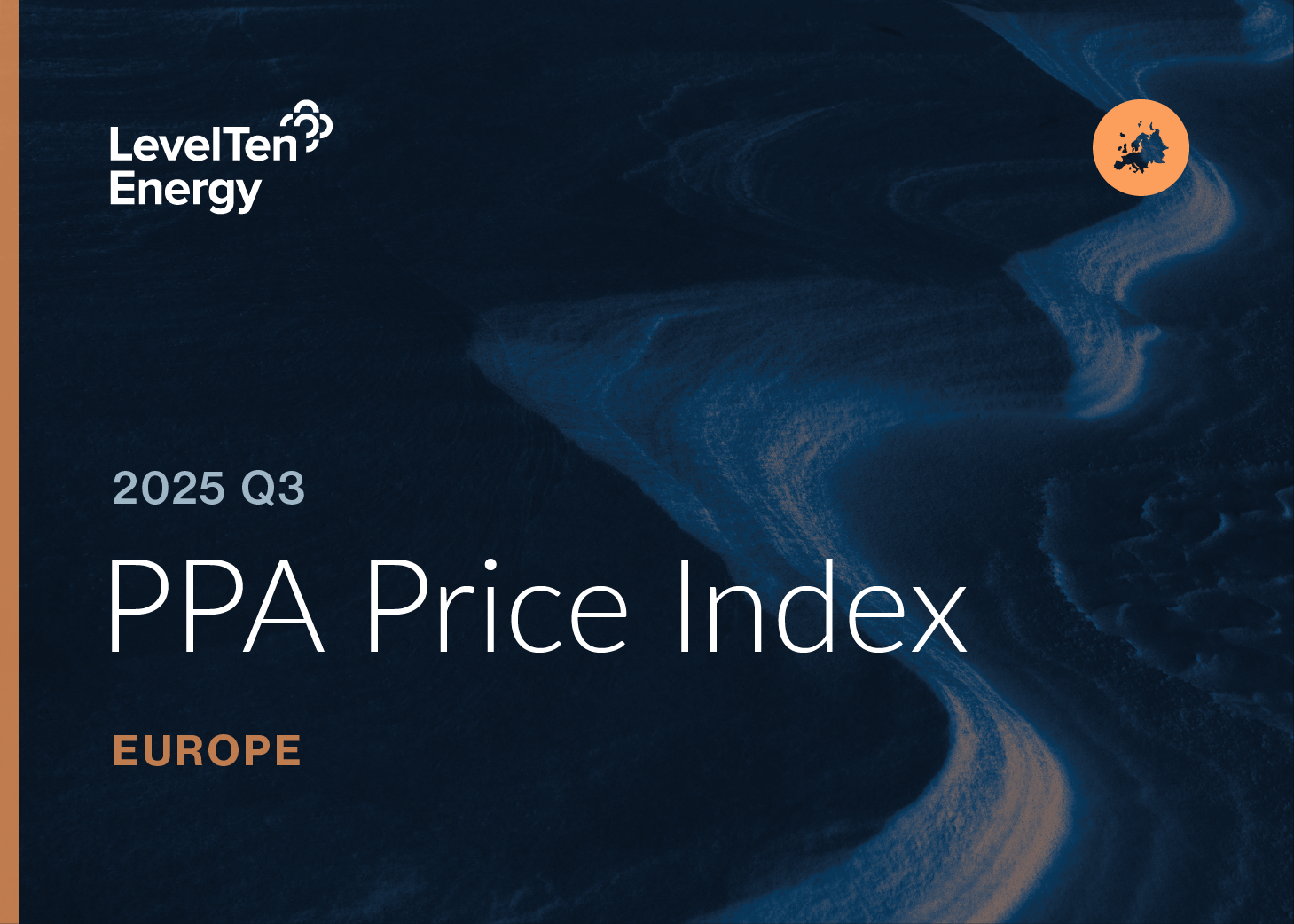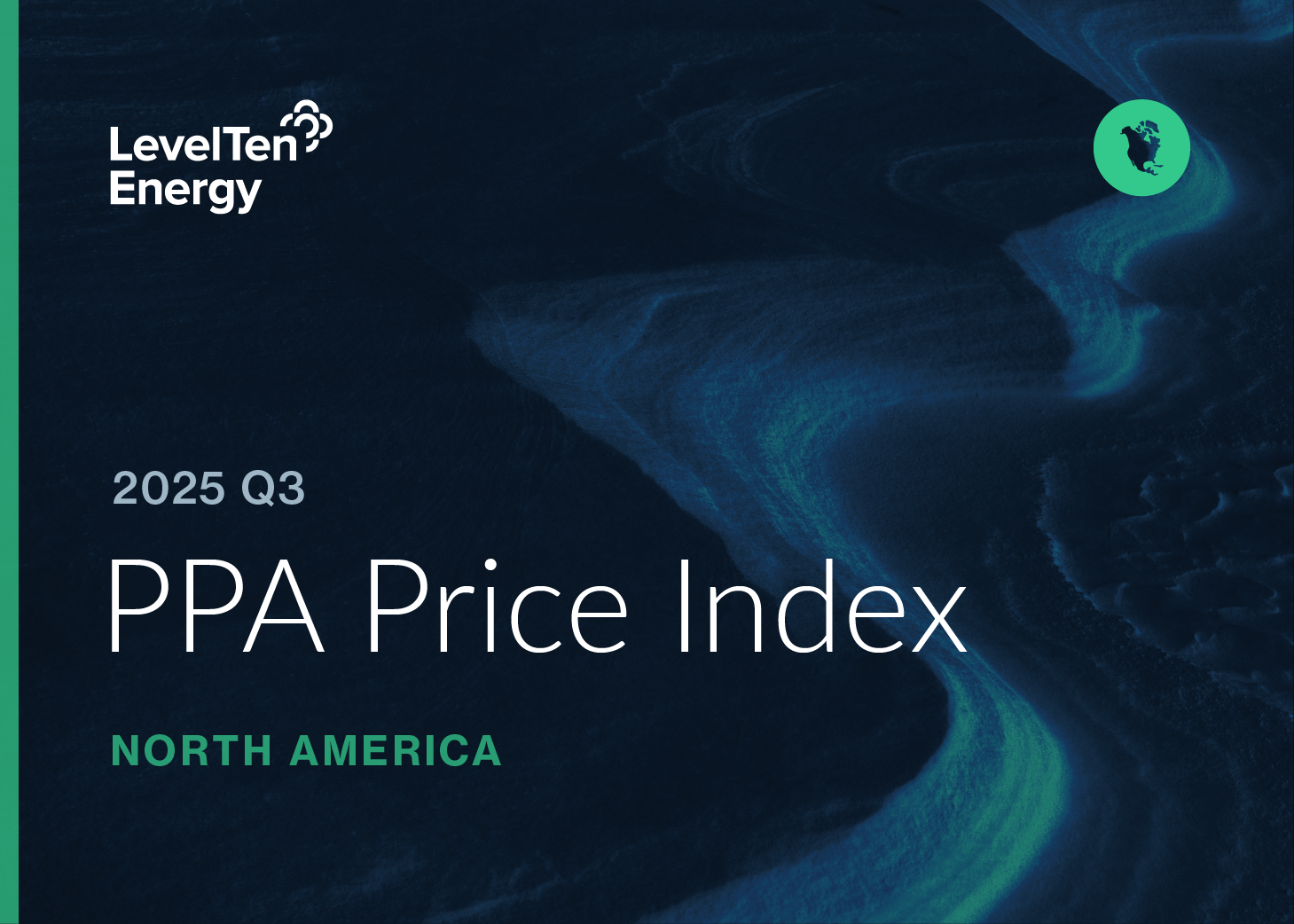New PPA Portfolio Model, Developed By LevelTen Energy, Diversifies Renewable Energy Procurement Risk and Opens Market to More Corporate Buyers
Today we announced an exciting and unprecedented deal; LevelTen Energy created a customized, 146-megawatt portfolio of virtual power purchase agreements (VPPAs) for Starbucks, aggregating partial offtake from three geographically-dispersed renewable energy projects. The portfolio comprises 50 megawatts of wind power from an Apex Clean Energy project in the SPP market (which was recently acquired by ALLETE Clean Energy); 50 megawatts of solar power from a Cypress Creek Renewables project in the ERCOT market, and 46 megawatts of solar power from a BayWa r.e. project in the PJM market.
Several aspects make this deal groundbreaking: First, and most importantly, the portfolio was designed by LevelTen with Starbucks' particular risk, value and geographical preferences in mind. Starbucks procured wind and solar power in volumes and locations suitable for Starbucks, rather than in predetermined volumes offered by the project developers. Second, each VPPA contract, though executed with different developers, had nearly identical terms. Finally, the VPPAs were signed nearly simultaneously; the procurement was designed as a portfolio from the start, not as a single transaction.
To devise this "mutual fund" of renewable PPAs, LevelTen employed our Dynamic Matching Engine, a series of algorithms that calculated which combination of projects, or, more accurately, which combination of project slices, would offer Starbucks the ideal blend of risk mitigation, value creation, and local community engagement.
Unlocking the Power of Portfolios Using Data Science
It used to be extremely time-consuming - and often impossible - for a corporation to find a clean energy project willing to sell it a small slice of the project's capacity, let alone three (or more) projects willing to sell it small slices at once. But thanks to the LevelTen Marketplace and Dynamic Matching Engine, we can identify projects that are willing to sell our clients just the right amount of energy, either because the project already has another large corporation or utility as an anchor tenant, or because LevelTen has identified other corporate buyers that can purchase the rest of the energy from the project.
Not only can we identify slices of projects that match our client's needs, we can identify which slices, when aggregated in a portfolio, will maximize value and minimize risk. Our Dynamic Matching Engine is fueled by the LevelTen Marketplace, which processes more than 26 million data points daily, including the latest market pricing, forward valuations and weather forecasts, to calculate the value and risk of every clean energy project under development. The Dynamic Matching Engine processes all of that data to find the ideal mix of PPA contracts for each individual LevelTen client.
The Benefits of a PPA Portfolio
This portfolio model, espoused by LevelTen, offers three key benefits to corporate renewable energy buyers:
1. Risk Mitigation through Diversification
The risk-reduction benefits of diversification are well known. It's a principle that applies equally well to the renewables industry. Just as a mutual fund is an appropriate vehicle for investors seeking diversification, so too are PPA portfolios good tools to mitigate PPA risk. There are several ways PPA portfolios reduce risk:
- Project Diversification
- Location: Market dynamics vary at all settlement locations (nodes, hubs and ISOs) across the country. A glut of new wind project development in Texas could push prices down in the West Zone in ERCOT, while a modification to a renewable portfolio standard in Maryland could increase demand - and prices - in PJM. Diversifying the locations of projects can mitigate these effects.
- Technology: In many locations, wind production is generally higher in the evenings, while solar production is, of course, higher during the day. By creating a portfolio that includes both technologies, corporations can reduce the overall volatility of their PPA investment.
- Developer Diversification
- Execution Risk: Developers need to execute hundreds of tasks before building an operational renewable energy project, including permitting, interconnection and installation. Failure to achieve any of these milestones can prove disastrous for a single project. Companies with significant renewable energy targets are rarely happy to learn that a project, for which the company has waited two years to come online, has failed. Contracting with multiple projects significantly reduces developer performance risk.
- Operation Risk: Once a project has reached its commercial operation date, the power buyers still generally rely on the owner/operator to manage the project effectively. By creating a portfolio of several assets, buyers mitigate the operational risk inherent in single assets.
2. The Right Quantity, in the Right Place
The PPA portfolio model not only diversifies risk, it also better reflects the way that corporations like Starbucks consume power. Since Starbucks has stores (and load) across the country -you might be reading this post from one right this moment-, the company wanted its renewable energy purchases to reflect this geographic diversification.
"Our goal is to bring new projects onto the grid close to communities we serve," said Patrick Leonard, energy manager for Starbucks company-operated stores in the United States and Canada. "Innovative deal structures, like this portfolio model powered by LevelTen Energy, allow us to invest in new solar and wind farms that will deliver the clean energy equivalent to the electricity powering 3,000 stores, and they open the door for many new buyers to cost effectively source smaller amounts of renewable energy."
3. Scale Pricing
In addition, portfolios provide the opportunity to capture scale pricing benefits. By aggregating buyers, LevelTen enables midsized corporations to combine their buying power and access the pricing offered by the country's largest, most economically attractive projects. This pricing was once only available to large corporations that purchased all the energy from a project.
This is Just the Beginning
By demonstrating that a single off-taker can safely and easily procure slices of renewable energy from a variety of new wind and solar projects, Starbucks has set an important precedent in the corporate energy procurement space. This approach enables many more corporate and institutional buyers to support, in a fiscally responsible way, the massive buildout of new clean energy projects across the globe.
Portfolio design is just one way that LevelTen facilitates frictionless transactions. To learn more about how we accelerate the clean energy transition, visit LevelTenEnergy.com.


.png)



